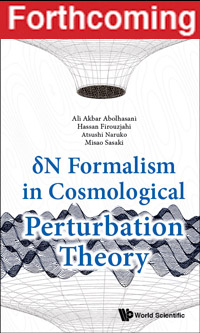دکتر علی اکبر ابولحسنی از دانشکده فیزیک دانشگاه صنعتی شریف و دکتر حسن فیروزجاهی از پژوهشکده نجوم دانش های بنیادی به همراه همکارانشان در ژاپن آتسوشی ناروکو Atsushi Naruko از دانشگاه توهوکو و میسائو ساساکی Misao Sasaki از دانشگاه کیوتو کتاب جدیدی را در حوزه کیهان شناسی اولیه به نام چارچوب دلتای ان -deltaN در نظریه اختلال کیهانی در انتشارات world scientific چاپ خواهند کرد.
نظریه تورم کیهانی که پارادایم غالب برای توصیف کیهان اولیه است علاوه بر حل مسئله افق و تختی در کیهان اولیه چارچوبی را برای تولید اختلالات اولیه در کیهان که بذر ساختارهای بزرگ مقیاس کیهان اخیر است را پیش بینی می کند.
آمار این اختلالات توسط بسط اختلالی معادلات میدان و کوانتومی کردن میدان ها به دست می آید. این روش سنتی محاسبات را می توان برای محاسبه آمار سه نقطه ای و بالاتر نیز استفاده کرد و لی این محاسبات به شدت دشوار هستند و برای مدل های کمی پیچیده تر تورمی امکان ناپذیر!!
روش delta N که ایده اولیه آن از میسائو ساساکی در دهه 90 بوده است از محاسبات نسبیت عامی برای بررسی مدهای اختلالی در بزرگ مقیاس استفاده می کند و محاسبات آماری را به شدت ساده می کند. از این رو این چارچوب محاسباتی می تواند برای بررسی مدل های پیچیده تورمی استفاده شود. ابولحسنی و فیروزجاهی که از مهم ترین محققان در این حوزه هستند به همراه پیشگام این حوزه ساساکی و همکارش ناروکو در کتاب جدیدشان که امسال چاپ خواهد شد، جوانب این چارچوب علمی را بررسی کرده اند.

